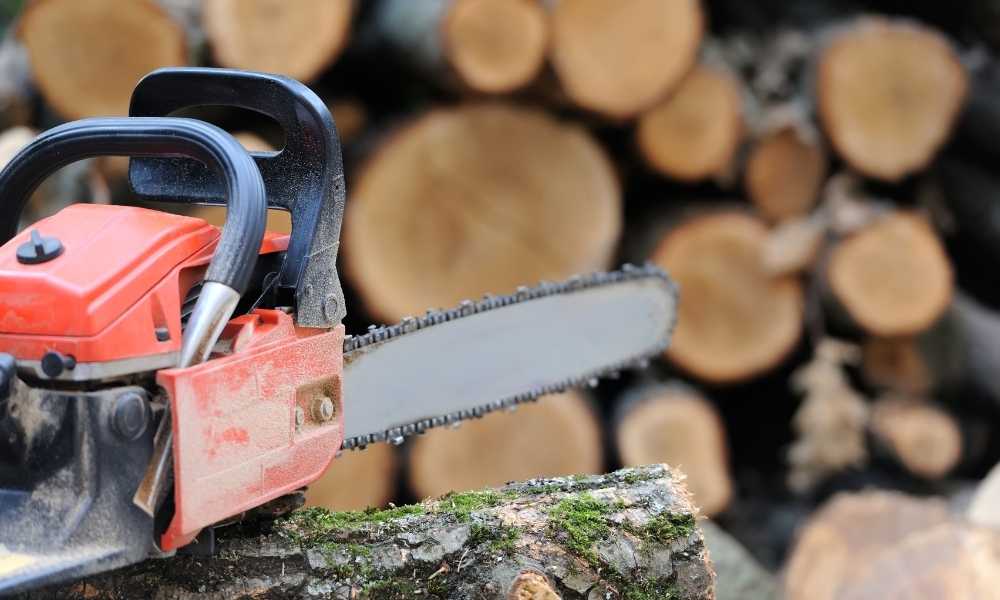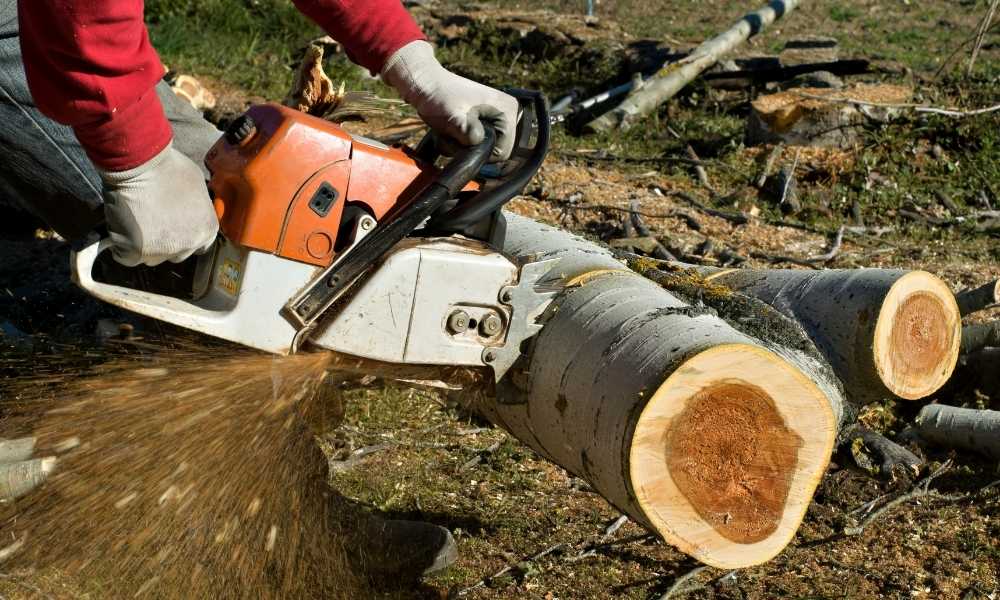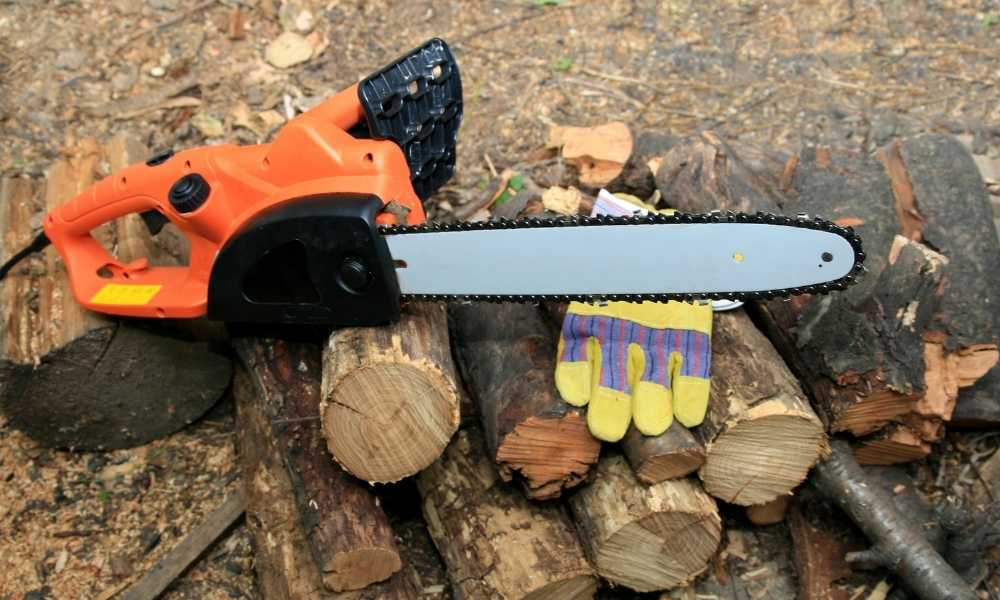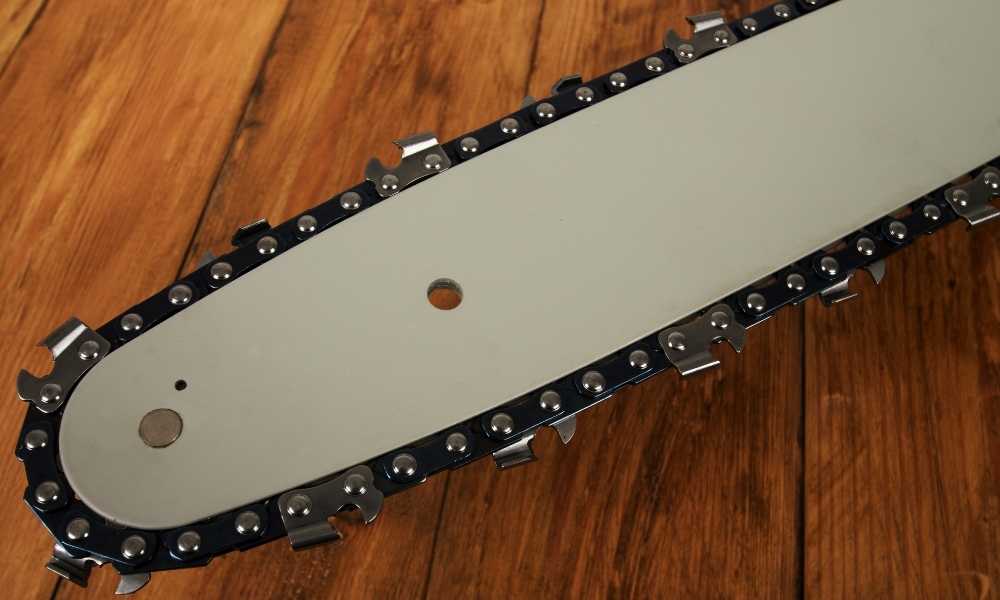In order to cut down trees, remove branches, or process logs, you will need a chainsaw at some point. It’s not just electric or gas that has a wide range of sizes to choose from.
Choosing the correct size chainsaw depends heavily on one’s level of experience and needs. The longer the bar, the more dangerous it is to cut through massive trees and logs.
More power can be obtained by using a saw with a shorter bar. Get a chainsaw that fits your needs and is easy to operate so that you can get the job done safely. A number of variables are at play. So that you may make an informed decision, I’ll look into these aspects.
Chainsaws are commonly kept on hand by tree service experts for a variety of practical reasons. Choosing the right tool for the job at hand is essential to ensuring your safety, as they are inherently harmful.
To cut down a dead hardwood full of knots with the most powerful saw is as risky as using a chainsaw designed for pruning cherry trees to cut down a dead oak.
To ensure that your chainsaw is safe to use whether you are purchasing, renting, or borrowing, you must know what to look for in a tool.
TABLE OF CONTENTS:
- The Proper Size for a Chainsaw
- Chainsaw Basics
- Chainsaws for light work
- Chainsaws for medium cutting
- Chainsaws for heavy-duty use
- Professional grade chainsaws
- Chainsaw Size is Too Long
- Chainsaw Size Is Not Long Enough
- Electric Powered Chainsaw Sizes
- Gas Powered Chainsaw Sizes
- How to Select the Right Size Chainsaw
- What Chainsaw Engine (Or Battery) Size Do You Require?
- What Guide Bar Length Do You Need In A Chainsaw?
- Conclusion
Straight to the point – What size chainsaw do I need?
A chainsaw should be at least two inches longer than the limb or tree being chopped, as a general rule of thumb. The optimum chainsaw’s guide bar (or blade) should be at least 10 inches long for an 8-inch-thick branch.
This makes it possible to cut through the wood in a single motion. The engine’s power should also be taken into account while determining the chainsaw’s dimensions.
The Proper Size for a Chainsaw

As the guide bar length increases, so does the engine’s output. In other words, a more powerful engine is needed to support a longer guide bar.
As long as you don’t travel more than a single step up in the guide bar that comes with the chainsaw, the blade can be swapped out with a longer or shorter piece.
To put it another way, a guide bar longer than the blade supplied by the manufacturer may be too much for the engine to handle.
Related Article: Top 10 Best Rated Chainsaws – Reviews and Buyers Guides
Chainsaw Basics
You’ll need to know the bar length and engine size of your chainsaw to get the most out of it. For larger trees, larger numbers are employed in both scenarios.
Bar Length
Out from the engine and handle comes the bar, a tongue-shaped metal component. When the blade is whirling, this is where it goes around.
Each bar has a 2-inch increase, starting at 12 inches and increasing to 42 inches. Chainsaws with shorter bar lengths are available, but these are only meant for the tiniest of pruning operations.
Homeowner chainsaws typically range in size from 14 to 18 inches, while professional-grade chainsaws can reach 42 inches. Even when it comes to shortening hair, there’s a problem.
The bar of an 18-inch chainsaw may or may not be exactly 18 inches long, but in most cases it is around 16 inches long when cutting.
Engine
The size of the engine is important when it comes to spinning the blade. The more cubic centimeters (cc) a gas engine has, the more powerful it is; the larger the number, the more powerful it is.
Gasoline chainsaws typically have engines ranging from 30 to 50 cc, with the larger engines paired with longer bars for more demanding tasks.
Size of the Work
The type of work you’re performing is the most important factor in determining the chainsaw size you’ll require. A decent rule of thumb is that a chainsaw’s bar should not be longer than twice the diameter of the trees you usually cut.
Chainsaws of the 20-inch kind can handle trees of the 36-inch variety.
Related Article: What Chainsaws Do Professional Loggers Use?
Chainsaws designed for professional use can handle a bar length of up to 2.5 times the bar’s length. For the majority of people, a rough estimate of the number of trees or brush to be removed will suffice.
A lot of people categorize items based on how frequently they’ll be chopped.
Chainsaws for light work

You’ll want a little chainsaw if you’re only going to be trimming limbs or chopping down saplings or tiny trees made of the softest wood.
Because these chainsaws are the smallest and lightest, and therefore the safest, to use while limbing trees at height, you’ll want to utilize them.
Electric chainsaws, whether corded or battery-powered, can be used for this type of job. Look for 14-inch bar lengths and motors between 30 and 40 cc.
Chainsaws for medium cutting
Chainsaws designed to chop trees or logs into firewood are beyond the capability of most electric chainsaws by the time you reach that point.
The range of bar lengths and engine displacements you’re looking at is between 16 and 18 inches.
If you’re a homeowner who has to clean up after major storms or in the spring, these chainsaws are great. A single tree can be felled by them, but they aren’t powerful enough to be used every day for heavy lifting.
Chainsaws for heavy-duty use

Those who live on the margins of the forest, such as ranchers or those who use wood to heat their homes, may have a true need for larger, more powerful chainsaws.
In order to harvest a big amount of firewood, they frequently utilize chainsaws to cut down giant hardwoods.
Related Article: Low Cost Chainsaws – That Really Work!
Chainsaws with 20-24-inch bars and engines ranging from 50 to 60 cc tend to fall into this category. Smaller jobs like pruning trees can’t be done with chainsaws of this size.
Their massive bars, on the other hand, pose a threat to people who do those tasks.
Professional grade chainsaws
The most vicious chainsaws have bars ranging from 24 to 42 inches in length and engines with displacements greater than 50 cc. They’re meant for persons who have a legitimate need for them and the training necessary to use them.
This includes arborists, as well as some ranchers and farmers who may have to regularly remove enormous trees for various reasons. Consider hiring a tree service if you just need this type of job done once in a while.
These are large, potentially hazardous, and incredibly pricey implements.
Chainsaw Size is Too Long
When it comes to chainsaws, it may seem like the best option is to acquire a large one so that it can handle any situation that may arise.
Chainsaws that are too lengthy for the job can be harmful if not used properly. Even if the saw is a few inches too large, the added vibration and weight might make it difficult to control.
The smaller the chainsaw, the easier it is to chop or prune only what is needed. This is especially true for more detailed work.
In addition, longer chainsaws are more prone to kickback. “Kickback” occurs when the chainsaw operator feels the chainsaw “kick back” at him or her because of an obstruction in the chain’s rotation.
To avoid any of these issues, don’t buy or use a chainsaw that’s too long. Buying the right size the first time will help you save a lot of money.
Chainsaw Size Is Not Long Enough
Your chainsaw, on the other hand, may not be the appropriate length for the wood you need to cut. However, a chainsaw that is smaller than the diameter of the wood can still be used successfully.
It will take a few passes rather than a single pass with the longer chainsaw to totally cut through this piece of wood.
Rather than starting at one end and cutting all the way through, using a chainsaw that is too tiny will force you to cut the tree in opposing directions on one side.
Related Article: The proper way to store a chainsaw
A chainsaw that can’t cut through wood with a diameter thicker than twice the chainsaw’s length is one to avoid. If your chainsaw is too tiny to handle the job, you may want to consider upgrading to a larger model or hiring a professional who is capable of handling such a large undertaking securely.
Electric Powered Chainsaw Sizes

Corded and cordless electric chainsaws are both powered by rechargeable batteries. Gas-powered chainsaws tend to be more powerful, but the higher-end versions have power that is comparable to the smaller gas engines.
Electric chainsaws are easier to use, lighter, and quieter than their gas-powered counterparts. For light to moderate work, with occasional more major tasks, they are the right tool set.
Typically, they come in 8 to 18-inch lengths, but longer bars are available. Their voltage ranges from 20 to 60 volts in cordless models to 9 to 15 amps in corded variants, depending on the engine size.
You may want to limit yourself to shorter bar lengths if you’re doing yard work, even if stronger bars can take greater lengths. To cut firewood, trim and prune small trees, and perform building work, these are excellent tools.
Related Article: Top chainsaw tips and tricks!
Gas Powered Chainsaw Sizes
Powered by a 2-cycle engine, gas chainsaws require a mixture of fuel and gas to function properly. Therefore, they require more upkeep than electric vehicles.
Unlike electric-powered machines, these heavy-duty machines come in a wide range of sizes, with bar lengths of up to five feet. Gas-powered chainsaws for home use typically have a bar length of 16 to 24 inches and an engine displacement of 32 to 62 cc.
How to Select the Right Size Chainsaw
To help you choose the right chainsaw for your immediate needs, I recommend that you answer the following two questions thoroughly and truthfully.
To be macho and get something that is way too big is not the time to do that now. Be careful not to buy something that won’t be adequate for the tasks you need it for.
What Is The Maximum Chainsaw Job Size Capability?
With a chainsaw, think about how big a job you can handle. Chainsaws and bar lengths are determined by the size of the project at hand. As a result, you’ll be able to make better decisions about what you need and what you want.
Have You Ever Used A Chainsaw Before?
A chainsaw is an extremely dangerous tool, therefore if at all possible, avoid using one for huge work unless you have a lot of experience with it.
Make use of the services of a qualified specialist. A local extension office may be able to help you learn how to safely operate a chainsaw in a controlled environment.
Related Article: Do electric chainsaws need oil?
What Chainsaw Engine (Or Battery) Size Do You Require?
If you’re only going to be trimming and cutting firewood occasionally, a smaller gas or electric chainsaw between 20 and 40 volts or 32 and 40cc might suffice.
Consider a chainsaw in the 40 to 60 volt range for electric or the 40 to 62cc range for gas if you undertake a lot of heavy labor, such as down small trees, on a regular basis.
What Guide Bar Length Do You Need In A Chainsaw?

Once you’ve answered the above questions, you’ll need to think about the guide bar’s length. It takes a more powerful motor to move a longer bar, and thus a longer chain. Heavy engines and increased vibration can be attributed to a larger bar length.
These elements contribute to user weariness during the course of prolonged tasks. The risk of an accident increases as you get sleepy. Keeping yourself safe means just using a chainsaw that is powerful enough to complete the task at hand.
Using a short bar is the best option. Chainsaws with smaller engines can be used with shorter bars, making them safer and reducing the stress on your muscles and back.
Most chainsaw operators agree that a chainsaw bar should be 2 to 3 inches longer than that of the diameter of the tree or limb that you intend to chop down.
Related Article: Who makes the best chainsaws – And where are they made?
You’ll need a 12-inch bar to get through a 10-inch tree in a single pass. Because you may cut a larger tree in multiple passes, you can cut a tree that is more than twice the length of your bar by making a bore cut into the notch.
Cutting larger trees, such as those with a diameter of 16 inches, may be more common, though.
By using a chainsaw with a greater bar size, you can minimize your working time and lower the risk of exhaustion.
Conclusion
Knowing how chainsaw sizes are decided is the first step in determining what size chainsaw you need. This necessitates familiarity with terms like “chainsaw bar length” and “chainsaw engine size,” among others.
In addition, you’ll need to know if you may use an electric or a cordless one powered by a battery or if you must go with gas.
The more you know about these basic metrics, the easier it will be to apply them to your everyday tasks. Consider using shorter bar lengths and smaller engines for minor work, such as a light trimming job.
Chainsaws with bars shorter than 20 inches are the next best thing. If you’re doing a lot of heavy lifting, you’ll need a more powerful tool.
Professionals and others whose work and personal lives necessitate frequent, heavy-duty cutting should go no further than the largest, most powerful saws on the market.

Leave a Reply